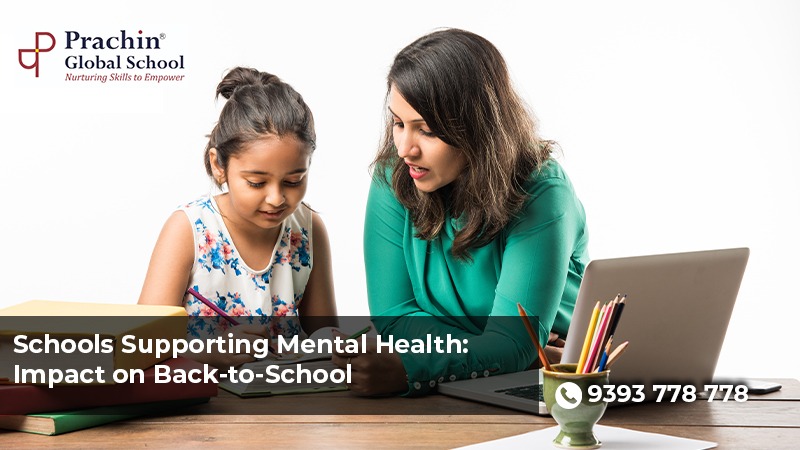The back-to-school season can be a time of excitement and anticipation for students. However, it can also be a period of stress and anxiety. The transition from summer freedom to academic demands, coupled with potential social anxieties and worries about fitting in, can take a toll on a student’s mental well-being.
This is where schools that prioritize mental health support can make a significant impact. By fostering a safe and supportive environment and offering resources, schools can equip students with the tools they need to navigate the back-to-school transition smoothly and thrive throughout the academic year.
The Importance of Mental Health Support in Schools
Mental health challenges are on the rise among children and adolescents. According to the Centers for Disease Control and Prevention (CDC), one in five children aged 9-17 in the United States experiences a mental health disorder in a given year. These conditions can significantly impact a student’s ability to learn, socialize, and reach their full potential.
Schools that prioritize mental health create a space where students feel comfortable seeking help. This can involve:
- Training teachers and staff: Equipping educators with the knowledge to recognize signs of mental health concerns and respond appropriately allows for early intervention and connection to resources.
- Building a positive school climate: Fostering a sense of belonging and acceptance through inclusive practices and anti-bullying initiatives reduces anxiety and creates a safe space for students.
- Providing access to mental health professionals: Having counselors, social workers, or psychologists readily available within the school environment removes barriers to seeking professional help.
- Implementing social-emotional learning (SEL) programs: Integrating SEL programs into the curriculum teaches students valuable skills for managing emotions, building healthy relationships, and coping with stress. These skills are crucial for navigating the challenges of adolescence and beyond.
Positive Impact on Back-to-School
Schools that prioritize mental health support witness positive effects on the back-to-school transition in several ways:

- Reduced anxiety and stress: Students feel more prepared to handle the academic and social pressures associated with returning to school, leading to a calmer and more focused learning environment.
- Improved academic performance: When students are mentally healthy, they are better able to concentrate, participate in class, and retain information, resulting in better academic achievement.
- Stronger social connections: Schools with a focus on mental health create a sense of community and belonging, making it easier for students to build healthy relationships with peers and teachers.
- Early identification of mental health concerns: By having support systems in place, schools can identify potential problems early on and connect students with appropriate resources to address them before they escalate.
- Development of coping mechanisms: Schools that teach SEL skills equip students with the tools they need to manage stress, anxiety, and conflict constructively, not only during the back-to-school transition but throughout their lives.
Creating a Supportive Back-to-School Environment
While schools play a vital role, there’s a shared responsibility for student well-being. Here are some ways parents, guardians, and the community can contribute to a positive back-to-school experience that prioritizes mental health:
- Open communication: Encourage open and honest conversations with your child about their feelings and concerns regarding the return to school.
- Establish routines: Routines provide a sense of structure and stability, especially after the free-flowing nature of summer. Setting regular sleep schedules, mealtimes, and designated homework times can help ease the transition.
- Positive reinforcement: Celebrate your child’s efforts and successes, not just their academic achievements.
- Connect with the school: Communicate with teachers and school counselors about your child’s specific needs and inquire about the mental health resources available at the school.
- Community involvement: Support local initiatives that promote mental health awareness and access to mental health services.
Conclusion
By working together, schools, families, and communities can create a culture that prioritizes mental health. Through proactive measures and readily available resources, we can ensure that all students navigate the back-to-school transition with confidence and are equipped to thrive throughout the academic year. Investing in student mental health translates to a healthier learning environment, improved academic outcomes, and ultimately, a more successful future for our children.

